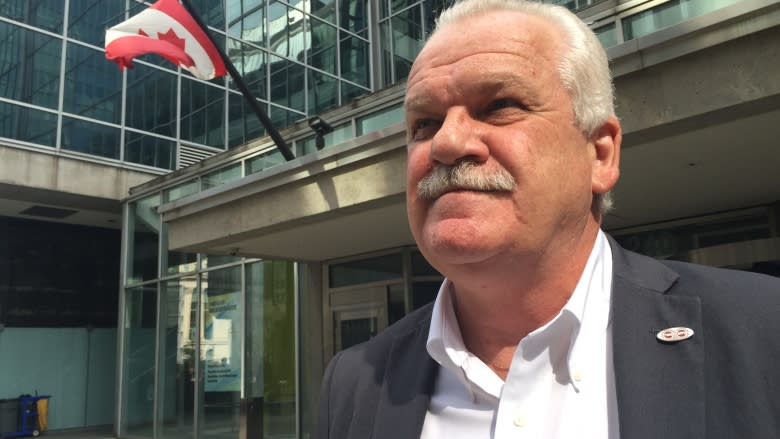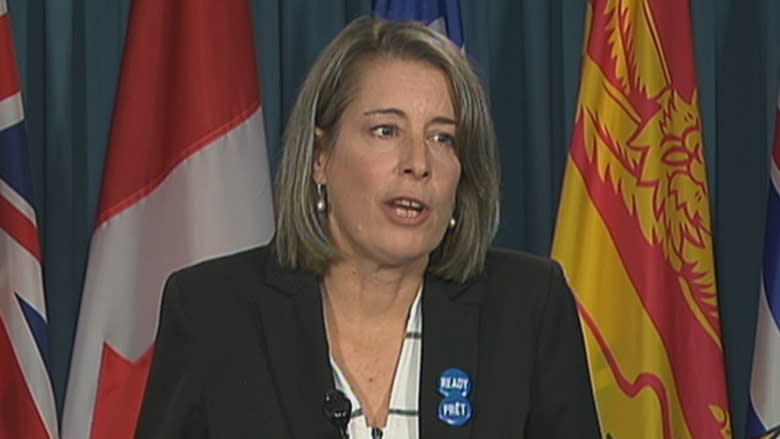Number of government employees fired for misconduct, incompetence sees sharp increase
The number of federal public servants fired for misconduct or incompetence has risen sharply in recent years, according to figures obtained by CBC News.
The government sacked 1,316 full-time public servants between 2005-06 and 2015-16 — 726 of them for misconduct and 590 for incompetence or incapacity.
An additional 862 were let go before they finished their probation.
While it's a small percentage of the more than 260,000 people who work in federal government departments, the number of people being fired for incompetence or misconduct has been on the rise.
The number of public servants who lost their jobs for misconduct rose 67 per cent, from 55 in 2005-06 to 92 in 2015-16, the last year for which figures were available from Treasury Board.
The number of people fired for incompetence has also increased. In 2005-06 the government fired 49 people for incompetence or incapacity. In 2015-16 that number rose to 77 — a 57 per cent jump.
Union leaders say the number of people fired is just the tip of the iceberg. Most federal public servants who are disciplined face lesser sanctions, such as reprimands or suspensions.
Neither unions nor the Treasury Board can say exactly how many federal government employees have been disciplined for misconduct or incompetence without being fired.
Chris Aylward is president of the largest public service union, the Public Service Alliance of Canada. He said the number of public servants fired each year is only a fraction of the number of those who are disciplined.
"That's certainly just the tip of the iceberg. Certainly there's a lot more public sector workers, I would think, being investigated and being disciplined but at a lower level — either written reprimands or oral reprimands."
Experts say one reason for the jump in the number of people being fired is a change that went into effect in 2014 in the way the government tracks the performance of its employees.
Nick Giannakoulis, vice-president of the Canadian Association of Professional Employees (CAPE), said his union has noticed an increase in the number of public servants being fired in the past two years — largely as a result of that new management system.
"Now, from an infrastructure perspective in terms of how PSPM (public service performance management) is managed electronically within departments, that is a much tighter process. So there's not as much latitude as there once may have been."
Conservative MP Tony Clement, who was president of the Treasury Board when the change went into effect, said the push for the new performance management system came from top public servants, not from cabinet.
"It was, I believe, in a sense of continuous improvement, the public service — particularly at the senior management levels — wanted to root out people who were taking advantage of taxpayers or taking advantage of their positions or involved in some other form of malfeasance."
Changes in technology are also playing a role, Clement said.
"If there's somebody who is using time for a moonlighting job or is stalking someone — all of this stuff is now online or can be found on the email servers. So, if you have a reasonable apprehension that somebody might be involved in malfeasance, there are ways to trace this now that weren't there before."
In June, the head of the public service, Privy Council Clerk Michael Wernick, sparked controversy when he complained that it was too hard to fire people who work for the federal government.
Testifying before the House of Commons Public Accounts committee looking in the Phoenix payroll scandal, Wernick said that deputy ministers have "precarious employment" with no job security or formal employment contracts, but it is difficult to dismiss people at other levels.
"Below the level of deputy ministers, if you're covered by the Public Service Employment Act, then you have very strong job security. You can only be terminated for cause, which is a legal test.
"It is extremely difficult to fire people in the public service for poor conduct or poor performance."
Wernick's comments angered public service union heads like Aylward, whose members are still struggling with the error-plagued Phoenix payroll system.
"If he wants to start firing public servants, maybe he should start with the ones who were responsible for implementing Phoenix," he said.
It can take months, if not years, for the government to fire someone — particularly if it's a case of incompetence rather than misconduct.
Giannakoulis said before a government employee can be fired, their manager has to first do a performance evaluation documenting problems with their performance. They then have to draft an action plan to help an employee and to give the employee a chance to improve or work on the problems that were identified.
"It depends, really, on the complexity of a matter," he explained. "Generally, it's not something that can be done overnight. They do have to follow due process, natural justice. So sometimes it could take the better part of six months to a year, depending on the circumstances."
Even then, the employee and the union can fight the dismissal.
"In some instances they are well documented cases," said Giannakoulis. "In other instances, the employer often doesn't do a good job in terms of following their own internal process."
Debi Daviau, president of the Professional Institute of the Public Service of Canada, said it's important for the government to have to demonstrate cause before firing someone for not being able to do the job.
"It takes about a year if you want to do it right."
In cases of misconduct, however, it can happen much faster, she said.
"If it's something like an employee has been caught with child pornography on their computer, it doesn't take a year to demonstrate cause. It can happen overnight."
Michel Vermette is the chief executive officer of APEX, which represents public service executives. He said the goal of the performance management system is to improve the performance of employees.
However, the increase in the number of public servants being fired demonstrates that the government does have the tools to get rid of employees when other measures don't work.
Those tools aren't always used, he said.
"It is onerous. You have to document it. You have to have those discussions. You have to offer the opportunity to the employee [to improve]."
Elizabeth Thompson can be reached at elizabeth.thompson@cbc.ca



